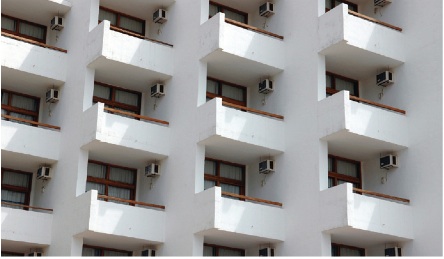Last November, the European Commission presented its long-awaited plans to revise EU legislation to regulate emissions from fluorinated gases (F-gases). The proposal, however, leaves it to the European Parliament and the Council to inject more ambition into it.
F-gases are super greenhouse gases, hundreds or thousands of times more potent than carbon dioxide. Hydrofluoro-carbons (HFCs) are the most widely used of the many types of F-gases and the most relevant for climate change mitigation. They were developed to substitute ozone-depleting substances which are being phased out under the Montreal Protocol and are used in a range of applications such as refrigeration and air-conditioning, and in foams and fire extinguishers.
The Commission’s proposal seeks to tighten the requirements of the F-gas Regulation adopted in 2006. There are good reasons to do so, as that Regulation relies mainly on measures to prevent leakage from equipment containing F-gases and to recover the gases at the end of the equipment’s lifetime. These containment and recovery measures have not only proven inefficient, but they are also more than twice as expensive as originally predicted.
Nevertheless, the EU’s F-gas emissions have risen by 60% since 1990 while the trend in other greenhouse-gas emissions has been downward. They account for 2% of the EU’s overall greenhouse gas emissions, but this share will increase substantially without further action.
The proposed revision of the F-gas Regulation introduces a ‘phase down’ of HFCs that gradually reduces the total amount sold in the EU to 21% of today’s sales by 2030. In addition, it includes limited bans on the use of HFCs in domestic refrigeration, hermetically sealed systems and certain other applications.
The limited use of bans marks a departure from the successful framework that phased out ozone-depleting substances (ODS) ten years in advance of the EU’s international obligation. The ODS Regulation combined a phase-down with bans in each sub-sector when CFCs and HCFCs, the ozone-depleting predecessors of HFCs, could be replaced with alternatives that do not damage the ozone layer. Several studies, including the preparatory study conducted by Öko-Recherche for the Commission, have shown that safe, energy-efficient and cost-effective alternatives can fully meet the market demand by 2020 in most sub-sectors. These include natural refrigerants such as ammonia, CO2 and hydrocarbons, which are already the refrigerant of choice in domestic refrigeration, for example.
In the face of this, the proposed legislation is conspicuously lacking in bans in all major sectors despite the fact that an earlier leaked draft had proposed bans in commercial and industrial refrigeration. The revision of the F-Gas Regulation should not be hijacked by vested interests lobbying for an outcome that would allow their patented products and new blends with mid-range global warming potentials to crowd out climate-friendly alternatives from the European market.
The EEB therefore urges EU policy-makers to provide an ambitious legislative framework to encourage a market transformation. This should include a robust phase-down schedule to prepare the market for the transition; bans to ensure that HFC-based equipment is not placed on the market where alternatives are available; and appropriate measures to prevent leakages and provide incentives to reclaim or recycle HFCs.
There have been several international initiatives to address HFCs under the Montreal Protocol. If the EU incentivizes the creation of a strong European alternatives industry ahead of a likely agreement on a global phase-down of HFCs, it can reap the benefits of being a leader in new environmentally friendly technologies. This makes perfect business sense to European companies as HFCs are already mostly produced outside Europe.
Susanna (Ala-Kurikka) Williams is Policy Officer – Energy and Climate Change, European Environmental Bureau.
This Commentary was originally published in the EEB Newsletter, Metamorphosis (#68, March 2013). www.eeb.org/?LinkServID=5B6E7583-5056-B741-DB8D5F768987B398&showMeta=0&aa



No comments yet, add your own below